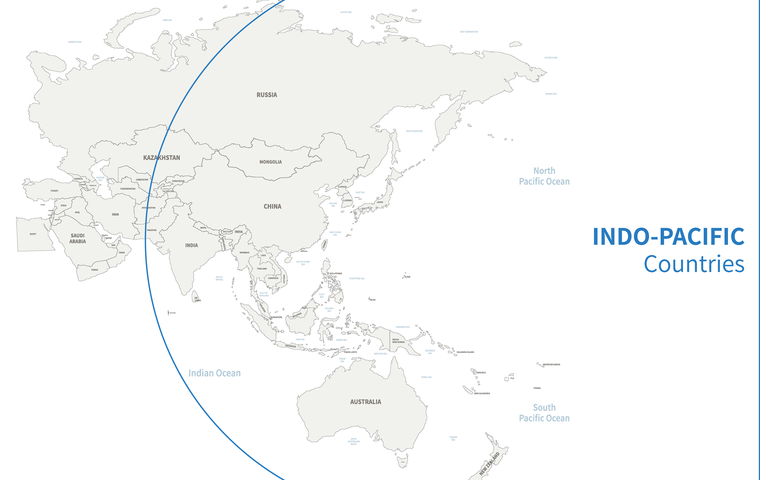U.S. Notifies Japan of 25% Tariffs, Tension Runs Through the Economic Alliance
Related Articles
Shock Announcement: U.S. Launches New Tariff Measures Against Japan
On July 7, 2025, news out of Washington sent shockwaves through global financial markets and diplomatic circles: the U.S. government formally notified Japan of its plan to impose an additional 25% tariff on a broad range of imports from Japan. This decision injects serious strain into economic relations between the world’s largest and third-largest economies—also the most important security allies in the Indo-Pacific. Markets reacted swiftly and sharply. Tokyo stocks plunged, while in foreign exchange trading the yen was bid as a safe asset even as volatility surged on heightened uncertainty.
The legal basis the U.S. cited for this extraordinary step is Section 232 of the Trade Expansion Act of 1962. The statute grants the President sweeping authority to levy tariffs or restrict imports when the Commerce Department determines that imports of particular products “threaten to impair the national security.” The law was heavily used by the Trump administration to impose additional tariffs on steel and aluminum, and its renewed invocation makes clear that U.S. trade policy has pivoted decisively toward a more protectionist and unilateral posture.
What makes the present action especially grave is how deliberately it mirrors past hardline measures in both rate and rationale. A 25% levy—matching previous tariffs on steel and certain auto parts—signals a political intent to exert maximum pressure at the negotiating table. Applying a “national security” logic to Japan, one of America’s closest allies, also contains a fundamental strategic contradiction. The move underscores that domestic political dynamics—protecting specific industries and appealing to core constituencies—have been prioritized over decades-long diplomatic ties and alliance cohesion. It risks setting a dangerous precedent that could erode the mutual trust underpinning the U.S.–Japan alliance.
The “National Security” Rationale and U.S. Domestic Drivers
At the core of the new tariffs lies an expansive reading of Section 232 and a persistent protectionist streak in U.S. politics. Originally crafted to secure military supply in wartime, Section 232 has in recent years been stretched to cover “economic security,” effectively serving as a powerful tool of domestic industry protection. Its defining feature is the ability to sidestep WTO rules and allow unilateral presidential action—freeing Washington from multilateral processes and enabling leverage through the weight of the U.S. market.
There is precedent: in 2018 the U.S. imposed 25% tariffs on steel and 10% on aluminum. Despite being a security ally, Japan—unlike Canada and Mexico—did not receive a blanket exemption. That episode underscored a hard truth for Tokyo: alliance status does not automatically shield partners from the United States’ protectionist trade measures. Today’s step reprises that experience and suggests that even relationships with close allies may be treated as bargaining chips in service of specific political or economic goals.
Behind the hard line is a zero-sum view—epitomized by “America First”—that casts trade deficits as national “losses.” Within that lens, international trade is competition over national interest, not mutual gain; tariffs can thus be justified to protect U.S. manufacturing—especially blue-collar jobs in the Rust Belt—and to force concessions from trading partners. With the November midterms on the horizon, many see a move calibrated to domestic political timetables, reflecting a prioritization of immediate electoral imperatives over long-term diplomatic cooperation and macroeconomic health. It signals a preference for domestic politics over international coordination, challenging the postwar free-trade order itself.
Inevitable Economic Fallout: From Autos to Consumers

Imposing a 25% tariff would have large and far-reaching economic effects—nowhere more so than in autos, the emblem of U.S.–Japan trade and deeply embedded in both economies. Past think-tank simulations illustrate the likely shock.
U.S. consumers would be hit first and hardest. A 25% surcharge on autos would lift sticker prices across the market—not only on imports but on domestically assembled vehicles as well. Analyses by the Alliance for Automotive Innovation and the National Automobile Dealers Association suggest average prices per vehicle could rise by roughly $5,800–$6,000 or more. Market researchers at LMC Automotive have estimated annual sales could drop by as many as two million units. This is not just a “Japan problem.” In an era of globally integrated supply chains, a “purely domestic” car scarcely exists. Even the best-selling Ford F-150 reportedly sources around 35% of its components from abroad. Tariffs on Japanese parts would directly raise costs for U.S. automakers, eroding the competitiveness of American-branded vehicles.
The stated aim of “protecting U.S. jobs” could also backfire. Work by the Peterson Institute for International Economics has estimated that a 25% auto tariff might reduce U.S. output by about 1.5% and cost roughly 195,000 American jobs—and, if trading partners retaliate, job losses could climb to as many as 624,000. Higher costs would squeeze manufacturers, depress sales, force production cuts, and trigger layoffs—a negative spiral. In short, these tariffs risk functioning as economic self-harm that injures U.S. consumers, workers, and companies at least as much as Japanese industry.
The policy also exposes how obsolete the domestic/foreign divide has become in a globalized economy. Japanese automakers operate 24 manufacturing plants and 44 R&D facilities in 19 U.S. states, employing hundreds of thousands of American workers and functioning as integral components of the U.S. economy. Tariffs ignore this reality of interwoven supply chains and hark back to a 20th-century model of national economies—one whose contradictions would likely inflict serious damage on the U.S. itself.
Japan’s Response from Government and Industry—and What Comes Next

Tokyo’s response was immediate and forceful. Chief Cabinet Secretary Yoshimasa Hayashi stated that targeting a treaty ally is “extremely regrettable,” urging Washington to exempt Japan. The government argues that Japanese steel, aluminum, and auto parts do not undermine U.S. security; on the contrary, the high quality of Japanese products is essential to the competitiveness of U.S. manufacturing—undercutting the measure’s national-security rationale.
Alongside diplomatic protests, Japan is weighing a WTO complaint. The U.S. action likely violates core WTO commitments, including Most-Favored-Nation treatment. Yet a major obstacle looms: the WTO Appellate Body remains paralyzed after years of U.S. blocking of appointments. Even a first-instance victory for Japan could stall if the U.S. appeals into the void—creating a legal cul-de-sac. This tactic exploits a rules-based gap Washington itself helped open, exposing the vulnerability of the international trade regime.
Industry, led by the Japan Automobile Manufacturers Association (JAMA), will press a complementary case inside the U.S. As former JAMA chair Akio Toyoda has long emphasized, Japan’s auto industry has invested in America for over half a century and now considers itself part of the U.S. auto sector. Expect JAMA to highlight jobs and local investment across states, arguing that these tariffs are not an attack on “Japan” so much as on American workers, dealers, suppliers, and consumers. In effect: a two-front strategy—government-to-government “hard power” negotiations paired with industry-driven “soft power” outreach to U.S. stakeholders.
The outlook remains uncertain. The best-case scenario is a negotiated exemption for Japan—likely requiring concessions from Tokyo. The worst-case is tariff activation, Japanese retaliation, and a grinding war of attrition that damages both economies. Either way, the episode is emblematic of how readily one country’s domestic politics can unsettle alliances and the global free-trade system. Its outcome will shape not only U.S.–Japan relations but serve as a bellwether for the future architecture of the international economic order.



